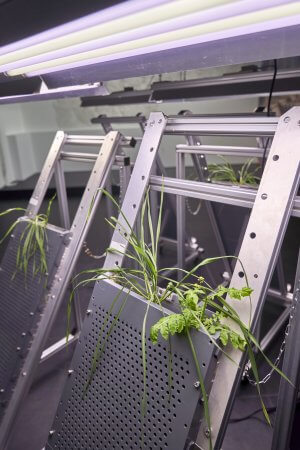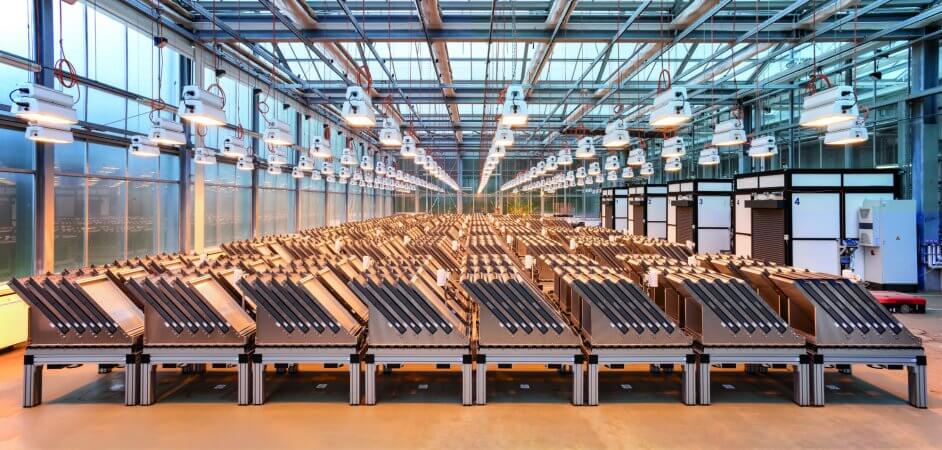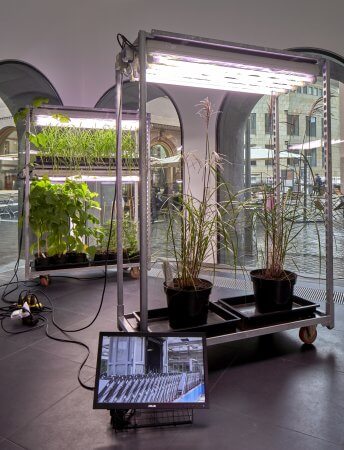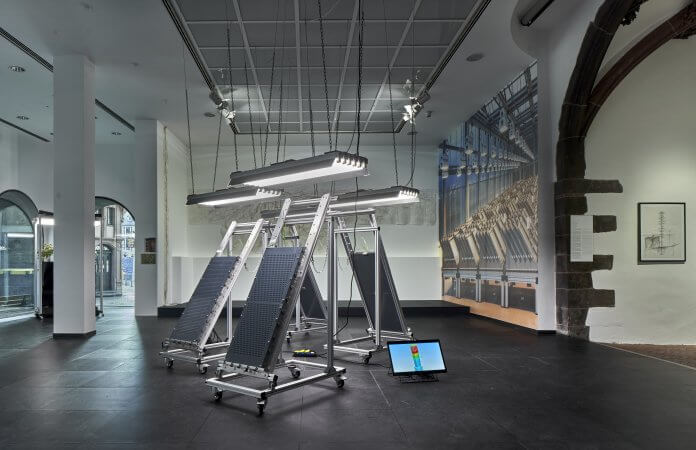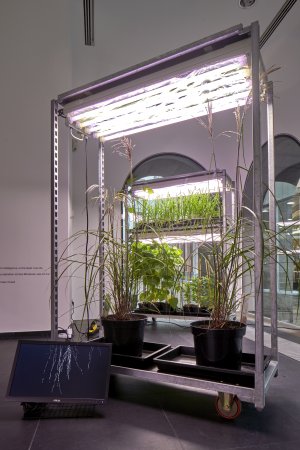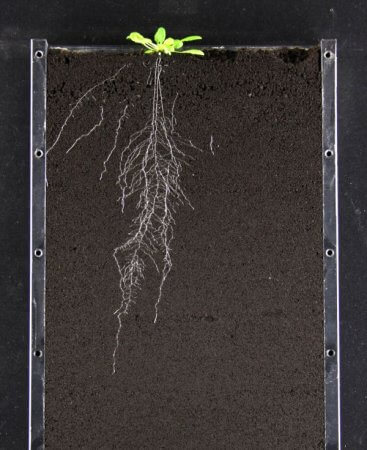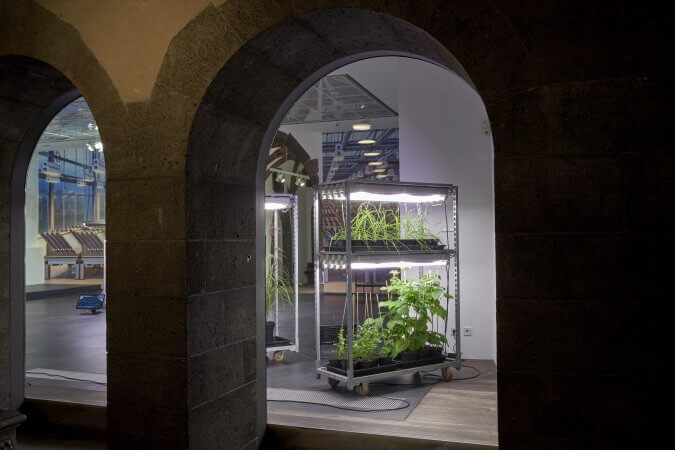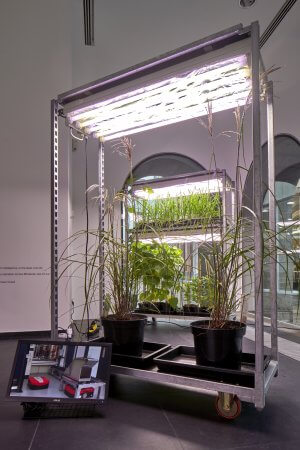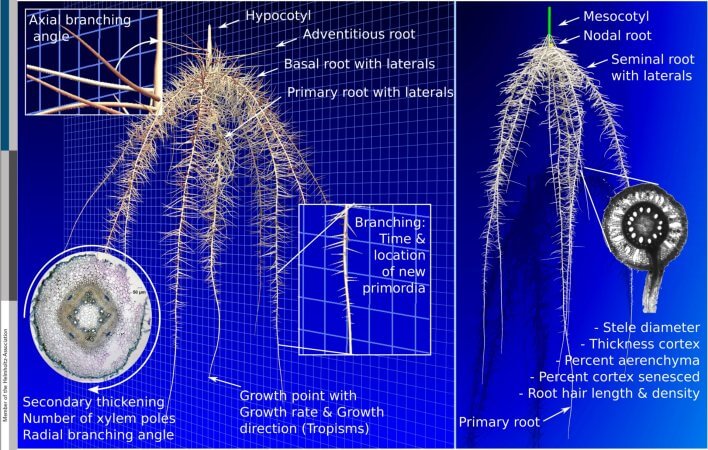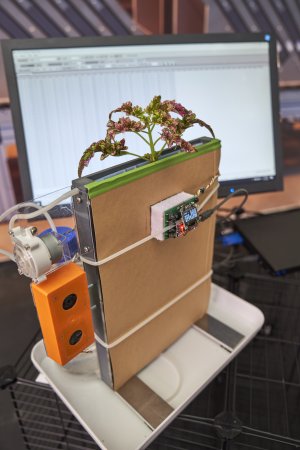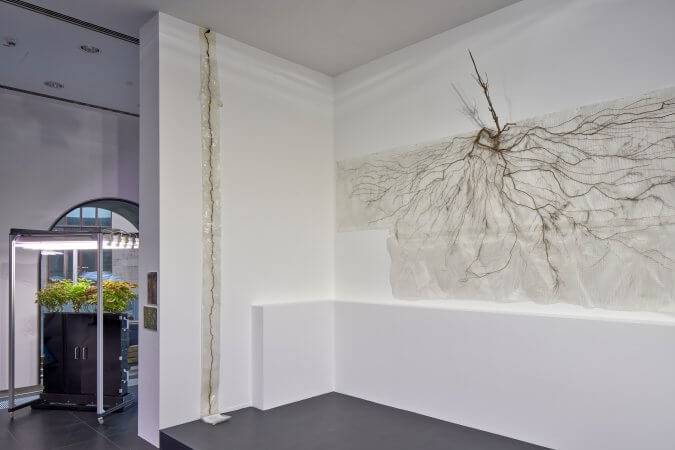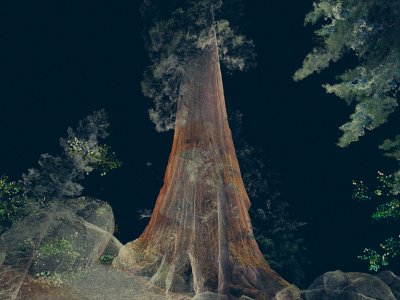Forschungszentrum Jülich
The Frankfurter Kunstverein has invited natural scientists and artists to visually transfer their work and knowledge into the exhibition spaces. The collaboration resulted from the cooperation with Prof. Dr. Ulrich Schurr, Director of the Institute of Bio- and Geosciences: Plant Sciences and the scientists Dr. Robert Koller and Dr. Andreas Müller.
How do plants live (and survive) now and in the future? What do plants need for their existence? How is their survival influenced by their environment? What do plants provide to humans?
In order to answer such questions, biologists, biochemists, chemists, computer scientists, mathematicians, physicists and engineers are researching a wide variety of plant species at IBG-2 (Institute of Bio- and Geosciences, Plant Sciences) at Forschungszentrum Jülich. Forschungszentrum Jülich is part of the Helmholtz Association (HGF) and, with over 6,500 employees, is one of the largest research centres in Germany.
Forschungszentrum Jülich makes effective contributions to solving major societal challenges in the fields of information, energy and bioeconomy.
Especially bioeconomy is becoming increasingly relevant with the challenges of today’s society. Oriented towards natural cycles, a sustainable and bio-based economy is to be created. The focus topics of IBG-2 are: Plants as the basis for food, renewable raw materials and energy, key technologies for the study of plants (=phenotyping) and concepts of the bioeconomy.
At IBG-2, the most innovative approaches to plant phenotyping and modelling are combined to better understand the interaction of the plant genome with its environment and the appearance of plants.
For example, the Plant Phenotyping Centre at IBG-2 used non-invasive sensors to quantify structural and functional traits of plants. Automated analysis procedures record the growth of sprouts and root characteristics, for example, via their root length, number of lateral roots and tending angle. Using model plants and also agricultural crops such as cereals, beans, peas and miscanthus.
Human survival depends on plants. Plants are used for nutrition, energy production, but also as basic materials for everyday objects or for construction and even for medical purposes. Globally, people are faced with the challenge of shaping agricultural production under the increasingly extreme conditions of climate change and resource scarcity with sustainability in mind.
This requires resistant crops that can be grown and used sustainably even under extreme environmental conditions, such as nutrient-poor soils or extreme dry periods. The mission of Forschungszentrum Jülich is to use state-of-the-art methods and technologies to research crops and the complex interactions between plants and the environment. To do this, the plant phenotype, the appearance of the plant, is analysed and determined. Phenotyping is the quantitative description of the appearance, i.e. the phenotype of whole plants or parts thereof, including the link to their function. This includes the above-ground part with leaves, stems, flowers and fruits, as well as the underground part of the plant, the roots, which in most cases are hidden in the soil.
Roots play a crucial role in anchoring plants in the soil, but also in supplying the plant with water and essential nutrients. Because roots are difficult to access and thus observe, they have long been neglected. However, a plant’s yield, stability and resistance depend largely on the good growth of its roots. The work at IBG-2 focuses on the development of new methods and technologies to non-destructively observe and thus better research the invisible but so essential part of living plants, the roots.
Root phenotyping methods use optical and non-optical technologies such as nuclear magnetic resonance or light and moisture sensors, as well as cameras. Automated systems are also used, which can process large quantities of samples and thus make it possible to measure hundreds of different lines fully automatically. Some systems allow the simultaneous measurement of above and below ground plant parts under changing environmental conditions. One example is the measurement of plants in the so-called rhizotron – planters that have a transparent disc that allows non-destructive measurement of dynamic root growth over a longer period of time. At the same time, the shoot can grow out and also be measured. This allows unique conclusions to be drawn about the adaptability of plants to periods of drought, for example, and thus helps to speed up the selection of resistant varieties.
With imaging techniques such as magnetic resonance imaging (MRI) and positron emission tomography (PET), the root architecture of plants can also be analysed in 3D, additionally with the temporal factor, i.e. 4D. MRI is a procedure from medical diagnostics for visualising the structure and function of tissue. PET is also known from medicine and is a nuclear medicine procedure that allows us to visualise metabolic processes inside plants. With the help of radioactive markers, material flows within the plant are made comprehensible and recognisable.
The Frankfurter Kunstverein explicitly exhibits crops such as pea, bean, old winter wheat varieties and miscanthus, which will grow under artificial conditions for the duration of the exhibition.
With artificial light, controlled room temperature and water and nutrient supply, crops are increasingly being grown in large facilities, greenhouses and vertical farms, which are intended to achieve increased yields under optimised, regulated conditions in shortened periods of time. But also in the field, plant species are used whose characteristics and behavior are selected according to the properties of sites or desired results.
Three factors are essential for photosynthesis in plants: water, carbon dioxide and light. Light is used by the plant as an energy source to produce oxygen and glucose from water and carbon dioxide. Since photosynthesis in plants takes place mainly in the wavelength ranges between 400 – 500 nm (blue), and 600 – 700 nm (bright red), LED luminaires are used to specifically illuminate the plants in these two spectra. The distance of the luminaires from the plants also plays an important role, as the leaves risk being burnt if they are too close or undersupplied if they are too far away.
In the Frankfurter Kunstverein, timers clock the lighting between 6 a.m. and 10 p.m. to allow the plants a recovery phase. It is important that artificial lighting pauses for several hours to simulate a night’s rest. The length of exposure to light, i.e. between day and night, clocks plants, which derive their perception of seasons from it.
Plants also derive important information for their existence from temperatures. If the difference between the temperature during day and night is not too big, plants have ideal growth conditions, as in early summer phases. By regulating temperature differences, one can artificially mimic seasons. In addition, temperature has a direct and great influence on the photosynthesis of the plant. Plant roots react very sensitively to temperatures that are too low or too high, which can lead to stress and damage. If plants are permanently exposed to temperatures below 5 degrees, they switch their metabolism to winter and thus to a prolonged resting phase.
Rhizotrons Showbox
Plastic, aluminium
200 x 160 x 100 cm
On loan from: IBG-2, Forschungszentrum Jülich, own creation
Rhizotron
Plastic, aluminium
137 x 44 x 89 cm
On loan from: IBG-3, Forschungszentrum Jülich, own creation
Rhizotrons are special measuring boxes used for root research. The vessels, which are filled with soil and open at the top, allow the observation of plant roots through a transparent disc and thus enable the simultaneous and non-destructive measurement of root and shoot characteristics of various plant species.
A show rhizotron makes visible how different soils (substrates) affect the growth of roots in the soil. Here, the effects of soil strength, moisture, nutrients or toxins, up to the influence of other living organisms as competitors or helpers on the plants are examined. This is illustrated by the different layers of substrates, e.g. peat soil, expanded clay, vermiculite, perlite, which show how differently the roots grow in them.
The special rhizotrons, which can be seen in the exhibition The Intelligence of Plants, were also equipped with a grid of several hundred holes in the transparent disc on the back. This perforated plate enables – in addition to the imaging representation of the root system – the removal of small amounts of soil both in the immediate vicinity of roots and in the root-free soil. Liquid can also be taken from the soil or substances can be introduced near roots via this hole system. All this makes it possible to study the nutrient and water uptake of roots at different soil depths as well as the effect of plant roots on the soil and its biological activity.
Gießbert
Plastic, electronics
40 x 30 cm2
On loan from: IBG-2, Forschungszentrum Jülich, own creation
Besides light, plants also need water. The so-called Gießbert determines the measured value “moisture of the soil” and only adds water when the soil shows signs of drying out. This precise and local measurement of the soil provides insights into the water uptake of plant roots and how this changes and adapts under different environmental conditions. As the irrigation is fully automated and can be connected to a sensor network, the Gießbert not only helps to collect scientific data, but also enables autonomous and very precise plant supply.
Plant rack
Wood, metal
189 x 140 x 56 cm
On loan from: IBG-2, Forschungszentrum Jülich, own creation
Für die Vermessung der Pflanzen, die sogenannte Phänotypisierung, müssen die Pflanzen angezogen und unter individuellen Bedingungen kultiviert werden. Vielfach wird über die Lichtquelle auf das Wachstum Einfluss genommen – über die Lichtfarbe oder -Intensität (rotes Abendlicht oder grelles Mittagslicht) oder über die Nähe zur Lichtquelle. Dies beeinflusst das Wachstum und die Vitalität der Pflanzen, auch indirekt über ihre Temperatur. In der Ausstellung werden aktuell beforschte Nutzpflanzenarten präsentiert, bei denen untersucht wird, wie sie sich mit ihren spezifischen Eigenschaften noch besser für den Klimawandel oder das zunehmende Bevölkerungswachstum eignen könnten. Erbse, Bohne und Winterweizen werden vor allem als Nahrungsmittel genutzt. Miscanthus spielt bei der Entwicklung von innovativen Produkten für die Baustoffindustrie oder als Plastikersatz eine wichtige Rolle. Moderne Weizensorten haben teilweise einen Verlust an ursprünglichen Eigenschaften, die heute wieder wichtig wären. Alte Sorten wie Emmer könnten helfen, wieder mit weniger Nährstoffen wie Nitrat optimale Erträge zu liefern und widerstandsfähiger zu werden.
Development from wild emmer to modern wheat varieties
Wheat domestication took place about 12,000 years ago in the Fertile Crescent in the north of the Arabian Peninsula. The wild emmer was the original form from which the first domesticated (=transformed into a cultivated variety) wheat emerged. Around 2000 years after this event, the migrations of peoples and the spread of agriculture caused emmer cultivation to spread to Europe. In the course of time, modern wheat varieties developed from emmer, such as durum wheat (used for pasta, noodles) and soft wheat (used e.g. for bread). Modern wheat differs from wild emmer, for example, in larger seeds or more upright growth and shorter seed dormancy. However, the process of domestication has led to a loss of genetic diversity. Modern varieties produce high yields if sufficient fertiliser (especially nitrate) is available. Problem: Nitrate is soluble in soil water and the nitrate that is not immediately taken up by the plants is washed into the groundwater with the rain. To reduce groundwater contamination, fertiliser levels must be reduced. This is where old varieties like emmer come into play, which cope well with less fertiliser. By crossing emmer into modern varieties, new varieties can be bred that deliver optimal yields with less nitrate and are also more resistant. Properties of the roots that are responsible for fertiliser uptake can also be incorporated. This is made possible by modern methods (such as rhizotrons), with which root growth can be observed and measured non-destructively.


